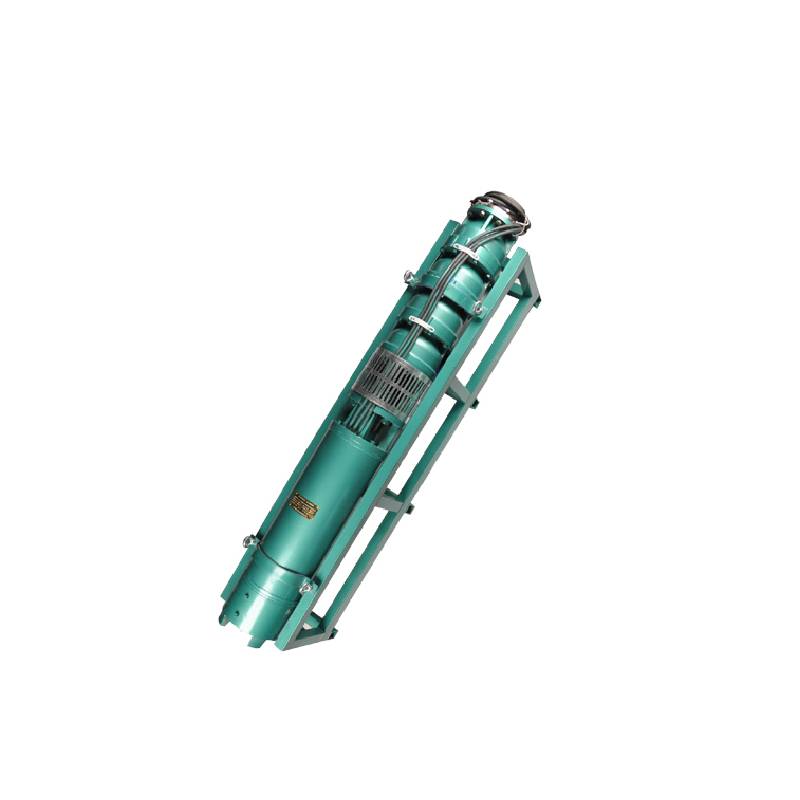Nov . 24, 2024 09:27 Back to list
single phase submersible pump
Understanding Single Phase Submersible Pumps A Comprehensive Overview
In the realm of fluid management, particularly in agricultural and residential applications, the importance of efficient water pumping systems cannot be overstated. One popular solution to this need is the single phase submersible pump, a device designed to operate underwater, effectively moving water from deep wells or reservoirs to the surface for various uses. This article delves into the workings, advantages, applications, and maintenance of single phase submersible pumps.
What is a Single Phase Submersible Pump?
A single phase submersible pump is an electric pump that is fully submerged in the fluid it is intended to pump. Unlike surface pumps that draw water from above the water source, submersible pumps push water to the surface from below. The term single phase refers to the type of electrical power required to operate the pump. In most residential settings, single-phase power is commonly available, making these pumps a preferred choice for homeowners.
The mechanics of a single phase submersible pump involve a motor attached to a hermetically sealed pump body. The motor is responsible for driving impellers, which create a pressure differential, allowing water to flow up through the outlet and into the desired location. This design not only enhances efficiency but also minimizes the risk of cavitation, a common issue in surface pumps.
Advantages of Single Phase Submersible Pumps
1. Efficiency One of the most significant advantages of submersible pumps is their energy efficiency. Being submerged, they are less prone to losing energy through vaporization compared to surface-mounted pumps, which can operate less effectively against high-pressure systems.
2. Compact Design Single phase submersible pumps are typically compact and can fit into narrow wells or boreholes, where larger pumps may not be able to operate. This feature is especially advantageous for residential applications where space can be limited.
3. Quiet Operation Being submerged, these pumps generally operate much quieter than surface pumps. For homeowners, this means less noise pollution, which is particularly beneficial in quiet suburban neighborhoods.
4. Reduced Risk of Overheating Since they are surrounded by water, submersible pumps are less prone to overheating. The submerged environment helps in cooling the motor, promoting longer operational life and reliability.
5. Versatility These pumps can handle various types of fluids, including clean water and even water with some solid particles, making them suitable for diverse applications, from irrigation to draining stagnant water.
single phase submersible pump

Typical Applications
Single phase submersible pumps find applications in several areas
- Residential Water Supply They are commonly used for pumping water from wells to supply households with potable water. - Irrigation Farmers often use these pumps to irrigate crops by providing an adequate supply of water from underground sources. - Sewage and Drainage In some cases, submersible pumps are employed for draining flooded areas or for removing wastewater in sewage systems. - Swimming Pools These pumps can be used to maintain water levels and quality in swimming pools.
Maintenance Practices
To keep a single phase submersible pump operating efficiently, regular maintenance is crucial. Here are some practices
1. Regular Inspection Check the pump regularly for any signs of damage, corrosion, or wear and tear. Look for any irregular sounds during operation as they can indicate potential issues.
2. Electrical Check Ensure that electrical connections are secure and not exposed to moisture, which could lead to shorts or failures.
3. Clean the Sump Area If the pump is in a sump pit, ensure it is free of debris that could clog the intake and reduce efficiency.
4. Testing Performance Periodically test the flow rate and head pressure to ensure the pump is operating within its designed parameters.
Conclusion
Single phase submersible pumps are a reliable, efficient, and versatile solution for a variety of water management needs. Their design allows them to thrive in challenging environments where traditional pumps may struggle. With proper maintenance, these pumps can provide years of trouble-free service, supporting agriculture, residential living, and more. As technology advances, the performance and efficiency of these pumps are expected to improve, further solidifying their place in modern fluid dynamics.
-
Submersible Water Pump: The Efficient 'Power Pioneer' of the Underwater World
NewsJul.01,2025
-
Submersible Pond Pump: The Hidden Guardian of Water Landscape Ecology
NewsJul.01,2025
-
Stainless Well Pump: A Reliable and Durable Pumping Main Force
NewsJul.01,2025
-
Stainless Steel Submersible Pump: An Efficient and Versatile Tool for Underwater Operations
NewsJul.01,2025
-
Deep Well Submersible Pump: An Efficient 'Sucker' of Groundwater Sources
NewsJul.01,2025
-
Deep Water Well Pump: An Efficient 'Sucker' of Groundwater Sources
NewsJul.01,2025
-
 Submersible Water Pump: The Efficient 'Power Pioneer' of the Underwater WorldIn the field of hydraulic equipment, the Submersible Water Pump has become the core equipment for underwater operations and water resource transportation due to its unique design and excellent performance.Detail
Submersible Water Pump: The Efficient 'Power Pioneer' of the Underwater WorldIn the field of hydraulic equipment, the Submersible Water Pump has become the core equipment for underwater operations and water resource transportation due to its unique design and excellent performance.Detail -
 Submersible Pond Pump: The Hidden Guardian of Water Landscape EcologyIn courtyard landscapes, ecological ponds, and even small-scale water conservancy projects, there is a silent yet indispensable equipment - the Submersible Pond Pump.Detail
Submersible Pond Pump: The Hidden Guardian of Water Landscape EcologyIn courtyard landscapes, ecological ponds, and even small-scale water conservancy projects, there is a silent yet indispensable equipment - the Submersible Pond Pump.Detail -
 Stainless Well Pump: A Reliable and Durable Pumping Main ForceIn the field of water resource transportation, Stainless Well Pump has become the core equipment for various pumping scenarios with its excellent performance and reliable quality.Detail
Stainless Well Pump: A Reliable and Durable Pumping Main ForceIn the field of water resource transportation, Stainless Well Pump has become the core equipment for various pumping scenarios with its excellent performance and reliable quality.Detail
